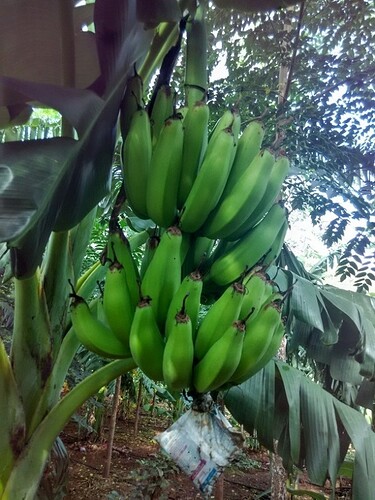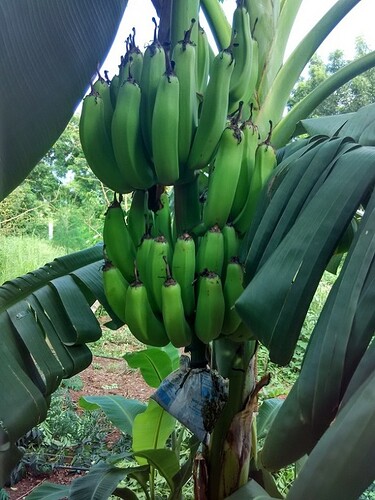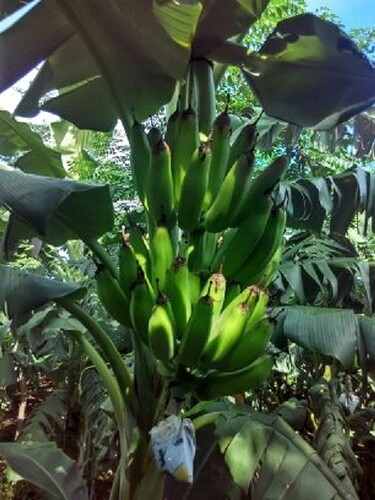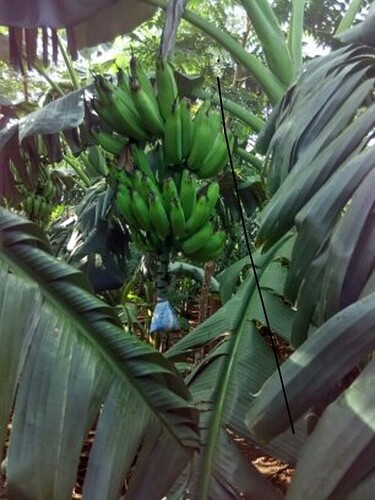DISEASE CONTROL IN ORGANIC FARMING
The disease control in organic farming involves improving and maintaining soil health with rich microbial populations and enhancing plants’ reistance to disease causing pathogens
DISEASE CAUSING ORGANISM
1.Fungi
2.Bacteria
3.Virus
4.Mycoplasma
PLANT PARTS AFFECTED BY DISEASES
1.Roots- Root rot disease , wilt disease
2.Collar region of the stem - collar rot disease
3.Stem- stem rot, stem blight and stem galls
4.Leaves- leaf spot, leaf blight , yellowing of leaves , Malformation (curling and cupping )in leaves, browning and bronzing of leaf margin , leaf mosaic , powdery mildew, downey mildew
5.Petioles - blight
6.Fruit -Fruit rot, fruit spot , blight
SPREAD OF DISEASE THROUGH
1.soil
2.plant debris / dead plant parts
3.irrigation water
4.wind
5.seed / planting materials
6.Farm implements
7.Farm labor
DISEASE SPREADING THROUGH SOIL
The wilt and root rot diesease spread through fungal spores like clamidospore and sclerotia .These spores stay in the soil for many years and infect the crops when it is planted again
The cleistothesia that causes powdery mildew disease in plant leaves reaches soil when the infected leaves falls down on to the soil and produce disease again when condition becomes favorable for the disease .
In organic farming , it is through incasing soil fertility by addition of more organic matter and building up of more microbial population int he soil that soil borne diseases are controlled .In such a condition , the beneficial microbial population grows fast that outnumbers harmful disease causing organism and check the growth of pathogens
METHODS OF INCREASING BENEFICIAL MICROBIAL POPULATION IN SOIL
1.Enriched farmyard manure , compost, well decomposed poultry manure, vermicompost applied to soil
2.Green manure like sunhemp ,daincha , theprosia , glyricidia sowing and incorporation of the same in the soil before flowering or just about flowering time , green leaf manure application in soil
3.Summer ploughing brings soil borne pathogen to the surface and exposed to hot sun light that kills pathogen
4.Mulching in soil create favorable condition . Increased soil temperature in summer favors Erwinia fungi that causes corm ( root rot ) rot in banana . By placing mulching , the weeds are controlled and thereby the pathogen is prevented from staying in the soil
5.The ground nut cakes, neem cakes, pungam cakes when applied in soil increase soil microbial population enormously that arrest the harmful pathogen causing wilt disease in banana, root rot disease in groundnut, and wilt disease in coconut
6.Crop rotation prevent build up of harmful pathogen in soil .Example head rot in cabbage, wilt disease in gouds, powdery mildew and root rot disease , and root disease occuring in carrot, cauliflower, tomato, bhendi, brinjal, sorghum,and paddy are controlled when crop rotation is done with maize
7.Excess soil moisture causes root rot and collar rot disease in vegetable nursery and main field planting . Rhizoctonia, pythium and pytopthora fungal pathogen causes root rot and colllar rot disease .Excess heat causes Erwinia ( bacteria ) disease in banana ( Banana rhizome rot disease ) -To prevent the root rot disease , the field is flooded with irrigation water ,ie cultivated with paddy for about 6 months that control disease causing pathogen
8.By covering land with polythene mulching sheet , the soil temperture is increased to 40-50 degree celsius .This reduce wilt disease in pumpkin, watermelon, radish,chrysanthemum
9.Green and blue color polythene mulching sheet reduce powdery mildew disease in cucumber
10.Polythene plastic mulch reduce bacterial disease in tomato .And also it does not affect beneficial bacteria like pseudomonas , bacillus .This indirectly increase the resistance of the tomato plant against disease causing pathogen
11.By laying reflcting mulch , the aphids that spread virus disease is distracted by reflecting light
12.The yelow mosaic virus in cucumber is controlled when paddy straw is mulched int he cucumber field that attract whitefly that is killed in raising heat
13.Mixing and enriching soil with pseudomonas , trichoferma viride, bacillus @1 kg each per acre will build beneficial microbial population in the soil
CONTROLLING SEED BORNE DISEASE
1.Using disease free seeds / planting materials - example - virus disease spread through roots / rhizome/ corms , smut disease , leaf spot and leaf blight disease through seeds
2.Wheat seeds are soaked in cold water for 4 hours and dried in hot sun during noon hours for 4 hours period .This eradicate spores of smut diease present in the seed coat .
3.Removing and roguing tomato plants infected with leaf spot, blight, mosaic cirus disease upto 6 weeks from planting and carefully destroying the infected plants
4.Soaking seeds in cow urine before sowing
5.The yellow mosaic virus, papaya ring spot virus, groundnut bud rot diseases are controlled when papaya, green gram, black grams and ground nut are planted with pearl millet or shorgum as bund crop around the field
CONTROLLING LEAF DISEASES
1.Neem seed kernal extract -5% controll leaf spot and leaf blight disease
2.110 ml cow urine, 5 grams fenugreek powder ,11 grams turmeric powder are dissolved in 1 lit water and kept for about 12 hours .The roots of the seedlings are drenched in this solution for controlling mos tof hte diseases
3.Garlic plus green chillies @ 11% spray controls virus disease in peas by checking aphids
4.Panchagavya @ 3% controlls leaf spot and powdery mildew disease when sprayed at 11 days interval
BIO PESTICIDE
Pseudomonas florescens
Seeds treatment -11 gram / kg seeds
Seedlings dipp - 2.5 kg / seeds quantity for one hactare
Field application - 2.5% product @ 2.5 kgs mixed in 50 kgs farmyard manure
Spray of pseudomonas - 0.2% ( 2 grams in 1 lit water )
Trichoderma viride
4 grams / kg of seeds for seed treatment - controls root rot and wilt disease in gingelly, sunflower, groundnut , pulses, vegetables
FIeld application - 2.5 kgs of pseudomonas in 50 kgs well decomposed farmyard manure - Controls turmeric rhizome rot .
BIO PRIMING - BEST METHOD IN CONTROLLING DISEASES IN VEGETABLE
It is a method of treating seeds with pseuodomonas bacteria or trichoderma viride bio pesticide . The required quantity of seeds are soaked in water overnight . Next day morning the seeds are treated with either pseudomonas or trichoderma and kept in moist cloth for 24 hours . Then the seeds are taken out and sown in the Nursery or protray …
The bacteria or fungus grows and penetrate seeds coat and proliferate inside the seed coat . When disease causing pathogen invade the seeds or seedlings later after sowing or planting , the well established bio poesticides kills the pathogen or check its entry into the plant system and protect the plants through out the growing period …
NEMATODES MANAGMENT IN ORGANIC FARMING
Nematodes lives in soil and water and some nematodes lives in plants as parasites . The nematodes measures 0.3 mm to 4 mm in length
The nematodes attacked plants look stunted and appear like suffering from nutrients deficiency
The fruit size is also reduced with poor quality
The nematode infected plants appear stunted like wilting and withering in patches here and there in the field inspite of enough soil moisture .Because the nematodes pierce the plant roots and suck all the nutreints and water . The plants attain maturity earlier than usual period of maurity thus reducing yield and quality
SYMPTOM OF NEMATODE INFECTED PLANTS
1.Looks dwarf and stunted
2.Less tillering and branches
3.shorter internode length
4.Leaf margin looks reddish brown and cupped upward
5.Rosette appearance , like cauliflower plants
6.Leaf tip turns white and bend downward
7.bud malformation
We need also to examine roots for nematode infestation
Lemon and organge - club root appearance without root hairs
Peas and beans - red or black lesion in the roots
Garlic roots- Root tip stunted and looks like hockey bat
The nematode infected roots are lated invaded by fungus and cause root rot disease as secondary infection - Beans, peas and potato roots
MANAGEMENT OF NEMATODES
1.Application of more organic matter
2.Crop rotation and intercrop
3.Cultivation of resistant varieties
4.Trap crops like tagetes
5.Sowing green manure like sunhemp that arrest nematodes in soil
6.The organic matter applied to soil produce organic acids and phenols that check the proliferation of harmful nematodes
7.The oil cakes like neem cakes , ground nut cakes , Castor cakes, Eucalyptus leaves controls nematodes
8.Sugar factory waste like pressmud controls nematodes in banana crops
9.In vegetable cultivation , we can plant garlic and onion that repells nematodes
10.Biological control - When organic matter is applied in enough quantity it induce carnivorus nematodes that feeds on parasitic nematdes causing disease in plants . Mononcus , diplogaster, tribilo are some example of predator nematodes
11.parasitic Fungus feeding on nematodes - Paecilomyces eats eggs of nemtodes that infect brinjal , tomato, betalvine and banana
Trichoderma viride fungi controls root knot nematodes in tomato, brinjal and banana
12.Rhizobacteria - The bacteria that is attracted towards root exudates are called rhizobacteria .Example - Pseudomonas kills root knot nematodes .
Bacillus bacteria also controls nematodes in soil
Nematodes are
1.Endoparasite living withing roots
2.Ectoparasite - Living on the surface of the roots
3.Semi endo parasite- half inside and half outside the roots
4.Nematodes feeding on bud, flowers and leaves …
So by following integrated approach like crop rotation , trap cropping , application of more organic matter and parasitic nematodes we cna control nemtodes and crop losses .
ORGANIC GROWTH PROMOTERS
Panchagavya
Seeds are treated @ 3% panchagavya solution this will increase early and more germination with profuse root formation and development
Treatment duration
Seeds of mustard, ragi, gingelly , pearlmillet, tomato, brinjal - 20 minutes
Bhendi, cucumber - 30 minutes
Pumpkin, bittergourd, snakegourd, ribbed gourd, bottle gourd, paddy - 45 minutes
Sugarcane setts, rhizomes of zinger, turmeric , potato - dip in panchagavya solution for about 5 minutes and shade dry for half an hour and then plant in the field
Spray for fruit trees
A month before flowering
once in 7 days or 15 days
After flowering
Once in 7 days or 15 days
After fruit set
Once in 7 days or 15 days
This will enhance more flowering, fruit set and fruit size and quality .The panchagavya sprayed fruit trees produce fruits that mature 15 days earleir than usual time and its fructose level increase 15 % more
VERMIWASH
Collect enough earth worms in a mesh and place it over the wide mouthed container . Then do trickle water over the earth worms .It washes the excretions and waste from the body of earthworms and is collected along with water in the container below .This is best growth promoting agent that is equal to onetime fertilizer application in the field
JEEVA AMIRTHA SOLUTION
Fresh cowdung and cow urine and jaggery each 5 kilograms and 1 kg flour of any pulses like green gram, or black gram or red gram are mixed in 200 lit water and is kept covered for 24 hours …The fermentation process is intitated and produce lot of microbes and decomposition product that are rich in minerals, vitamins, organic acids .This jeevamrutha solution can be field applied or even sprayed on foliage .
ENRICHED BIO-SOLUTION
50 kgs of cow dung in 77 lit water is mixed in 200 lit container. 100 grams ferruos sulphate is dissolved in 2 lit water and this mix is poured into the barrel
3 kgs of jaggery, 100 ml castor oil and 100 grams yeast are dissolved in 20 lit water and mixed well and kept for about 3 hours stirring the content thoroughly every 15 minutes .After 7 days , the content is boiled enough to kill all the unwanted microbes .Then this is divided into 4 equal parts and added with enough quantity of azospirillum , phospobacteria, pseudomonas. In next 24 hours these microbes multiply in alarming proportion.
This enriched bio solution can be applied to field along with irrigation water
WIFE OF PANCHAGAVYA -AMIRTHA SOLUTION FOR SOIL HEALTH
(Farm scientist great shri.Palekhar’s invention )
Fresh cow dung -10 kgs , cow urine-10 lit , jaggery -250 grams and water 100 lit all mixed and kept in cement tank .In 24 hours the amirtha solution will be ready.
This can be applied to field @ 10 % solution or sprayed @10% on foliage
For enriching soil in an acre it needs 500 lit of amirtha solution but for foliar spray 10 lit solution is enough .
BROTHER OF PANCHAGAVYA -JEEVAMIRTHA
10 kgs of cow dung and 10 lit cow urine and 2 kgs of jaggery and 2 kgs of minor millets are mixed in 200 lit water . To this add a handful of fertile soil and stir it well in a tank
Daily 3 times for 3 days this mix is stirred throroughly . A gram soil contains billions of microbes that multiply very fast in this mix and double its count every20 minutes .You can not count the numbers and multiplication of microbes multiplying at this very fast rate . This mix is called jeevamrutha
When you apply this mix in soil , the characteristic smell of this jeevamirtha wake up all the earhtworms sleeping 15 feets down in the deep soil layer and all the worms jump in joy , penetrate the soil layer and come up to the top . The enormous earthworm and abundant nitrogen ( 78% )in the atmosphere give enough nutrients for organic cultivation.
SISTER OF PANCHAGAVYA -BEEJAMIRTHA
5kg cow dung and 5 lit cowurine in 20 lit water .To this add 50 grams pure calcium oxide and handful of fertile soil .Stir it well and keep it soaking from evening 6.00 Pm to next day morning 6.00 AM.
alreaddy a large scale model organic farim has been devloped in india in 2005. theyd do not use any of the current organic farming inuts/methods.
but, this performance is not known to many .
Thank you Sir Ramu Garu,
Thank you Very Much for your Dedicated information on Organic Farming. I myself and all our Farm-Nest Members are hat-sup for your Informative posting.
In this Regard It is the right Time and Place the results of your Advise on Cow dung and Cow-urine Fertigation to Banana Bunches. I am proving the same in the Attachments. In view of the simple Task I got Very GOOD Crop without any Spots with GOOD colour.
MANNE.SN,
for Vasudha Green farms,
9133498366,
7416446789
Dearest Dr.Manne garu
Thanks . I have just provided a simple outline about organic farming and it is about 0.0000000001% of real organic concept that no one can refute.
What I have presented here is collection of pieces of information about various practices being followed by different farmers across our country .These are just a traditional practices with the farmers .The kind of such practices followed in one geographical location with specific weather and climate may not fit in some other locations due to inherent problems in various geographical locations that vary in soil type, weather and climate, irrigation sources etc…
As for me there is no big difference existing between organic farming and natural farming or other similar concepts
It is the various methods of farming being evolved over the years as civilization progress among the world people right from the Paleolithic period to today’s ultra modern life with ever increasing population that is expected to reach around 9 billion in near future …
No one expected some 30 to 40 years back that water would be sold in the market and most of the the water bodies disappeared now …
Whether organic farming , or natural farming or Zero budget natural farming or conventional farming or primitive farming , or traditional farming or mechanized farming what ever the type it might be …All the farming relies on only one concept that describes about the role of earth and atmosphere as an energy giant that determine the fate of living things on this globe…
Now I think you are the right person here to initiate the discussion about organic farming and deliberate on this forum about the technical nuances involved in every practices followed in this farming method …
Let your good self start the discussion that I think clear many doubts and suspicion prevailing among the fellow fraternity
Regards
Ramu



